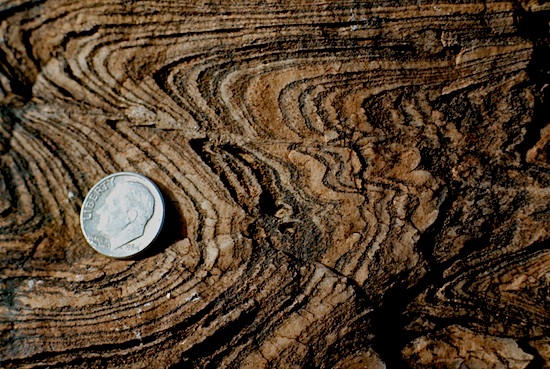Crustal DeformationEnormous stress is imposed on the crust at the boundaries of the lithospheric plates and where convection currents in the mantle tug and tear at the crust above. When a stress is imposed on rock material it will deform (change shape) and often volume. The change in shape as a result of imposing a stress is called strain.
Figure 5.23 Folds in quartzite due to compression There are three basic kinds of stress. Compression occurs when rock masses are pushed together like that which occurs when plates collide. Rocks tend to shorten laterally and thicken vertically when exposed to compressional stress. Compression often creates greate folds in rock. Tension, or tensional stress, pulls the crust apart, like that which occurs along diverging plate boundaries. Tension extends the crust causing it to thin and lengthen. Rifting, like that which created the Great Rift Valley of Africa, is a result of tension. When plates slide past one another in opposite directions along transform plate boundaries, a shearing stress is created. Shearing stress cuts the crust into parallel blocks displacing them horizontally relative to one another. Shearing takes place along the San Andreas Fault where the Pacific Plate is moving past the North American Plate. Learn more about what happens to rock when exposed to stress by "Digging Deeper into the Behavior of Rock Material" or skip and continue reading.
|

